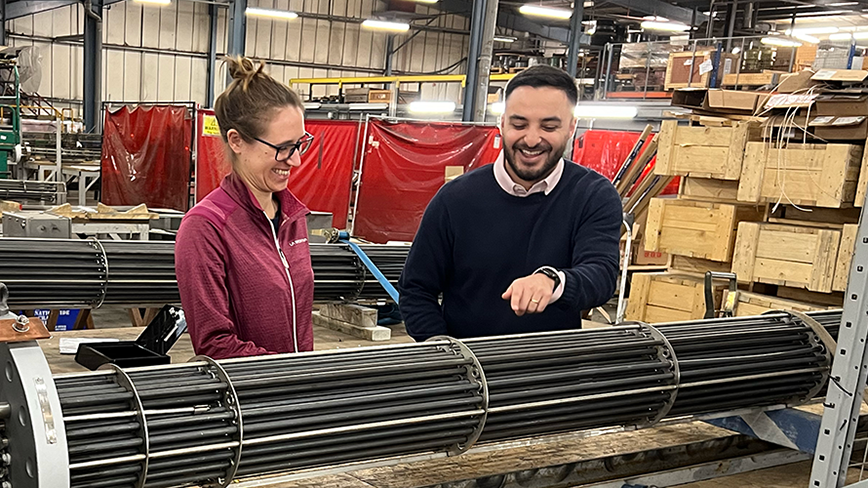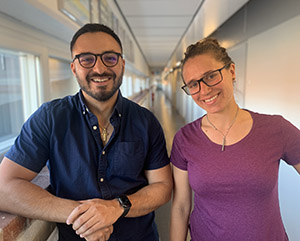New EU funding boosts thermal systems research

New funding for KTH’s experts in thermal systems paves way for new experiments and brand new rigs in the lab at the energy department. We sat down with researchers Rafael Guedez and Silvia Trevisan to understand why five new projects within the same field just started, and what role collaboration has in driving innovation.
35 million EUR funding from the European Commission has just made five new international projects see the light of day. All of them are connected on the basis of hybrid renewable systems for heat and power supply that combine solar energy, heat upgrading technologies, thermal energy storage, the use of circular materials and industrial waste heat recovery.
Why is KTH an important player in these projects?
Rafael: “KTH has an extensive know-how in thermal energy. We can conceptualize technically feasible solutions and adapt our lab to host multiple rigs with large energy capacities mimicking industrial conditions while ensuring safety. We have also built trust and reputation internationally in the way we manage projects, optimise resources and connect different networks and stakeholders.”
Why do you think this kind of research is interesting for EU?
Silvia: “The necessity to develop energy solutions that optimize the exploitation of the existing resources has become evident. Cost reductions and efficiency increases are crucial, particularly in industrial decarbonization, and further development is needed. “
Rafael: “To reach our net-zero targets we need to fully decarbonize heat and power supply. Using renewables clearly represents an opportunity, and the resources are abundant, particularly solar energy. However, they also vary in time and geographically. It becomes evident that we need to design “flexible” systems that combine best available renewable resources and energy storage systems to meet demands from the grid and industry, which are also variable.”
Collaboration is a key aspect in all these projects, how come?

Silvia: “No technology can solve our energy needs, and particularly industrial decarbonization, on its own. Collaboration among industries, enterprises and academia is vital. I think most companies that today are trying to get to the market with solutions within this sector have to collaborate with other entities to make the market trustable and to enable broader deployment.“
Rafael: The relationship between all relevant stakeholders is paramount bringing these solutions closer to society and adopting their use. In the case of the industrial partners, many understand that the market being addressed is sufficiently large such that sharing information and getting only “a slice of the pie” can make them first movers and benefit their business in the long term.
What will the EU money be spent on?
Silvia: “At KTH we will construct rigs to validate hybrid energy system solutions and optimize specific components. The goal for all these rigs is to be flexible and modular so that we can use and valorize them in the next years also in the context of new upcoming opportunities optimizing the use of public resources too.”
What motivates you?
Rafael: I like to think that my team at KTH and the Heat and Power Technology unit is motivated by purpose and our capacity to influence next generations through our research and education in the energy sector. I guess this add to our success somehow.
Written down by: Anna Gullers
The projects
SCO2OP-TES – sCO2 Operating Pumped Thermal Energy Storage for grid/industry cooperation
POWDER2POWER (P2P) – MW-scale fluidized particle-driven CSP prototype demonstration
eLITHE – Electrification of ceramic industries high temperature heating equipment
USES4HEAT – Underground Large Scale Seasonal Energy Storage for Decarbonized and Reliable Heat
SUSHEAT Smart Integration of Waste and Renewable Energy for Sustainable Heat Upgrade in the Industry
